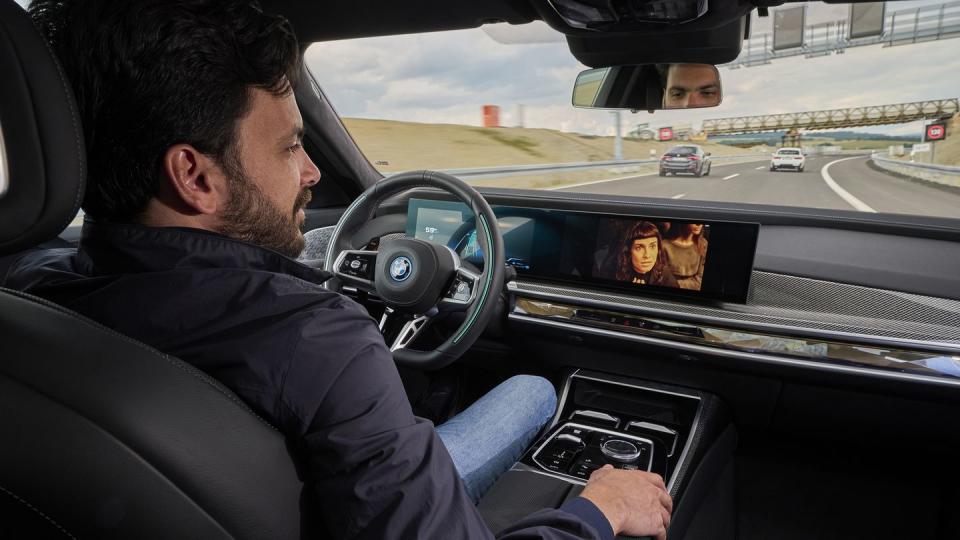Does Bavaria Have the Right Way toward True ‘Eyes-Off’ Systems?

BMW receives green light in Germany for commercial debut of a combination SAE Level 2 and Level 3 driver-assist system.
SAE Level 3 systems permit the driver to take their hands off the steering wheel and eyes off the road, allowing them to read or text for minutes at a time, until the system signals them to take back control.
A number of Level 2 driver-assist systems are currently offered in vehicles in Europe and the US, including versions of Tesla's Autopilot, while Level 3 systems have been permitted in just a handful of US states.
BMW has just become the first automaker to receive approval in Germany for a system combining SAE Level 2 and Level 3 capabilities in the BMW 7-Series.
This means BMW has effectively paired its Highway Assistant with the more capable BMW Personal Pilot Level 3 system in the same vehicle.
The main difference between SAE Level 2 and 3, of course, is that the latter permits drivers to take their eyes off the road for prolonged periods of time, until the car signals them to take back control. Level 3 allows drivers to text, read, or watch videos under certain traffic conditions, but drivers are required to reassume control within a few seconds' notice.
BMW's Level 2 Highway Assistant, meanwhile, works at speeds of up to 81 mph, allowing drivers to take their hands off the steering wheel while keeping their eyes on the road while traveling on divided highways. This system includes an Active Lane Change Assistant, which enables the car to change lanes without steering input from the driver.
"Plus, the driver is able to initiate a lane change suggested by this system by simply looking in the exterior mirror to confirm it," BMW notes.
But there are a few asterisks to BMW's Level 3 system at the moment. This capability works "under certain conditions" at a speed of up to 37 mph, making it suitable for traffic jams but not every other type of road or traffic situation.
The other big asterisk is that this combination of Level 2 and 3 functions has been approved for the BMW 7-Series only in Germany for now, and is priced at €6,000.
SAE Level 3 systems are currently permitted in just a handful of US states, with Mercedes-Benz being the only company to field them in the US.
State-by-state legislation effectively prevents an automaker from offering such a system in every jurisdiction, which is also why German and Japanese automakers have shied away from bothering to certify and offer such systems in the US, even though a number of them have been on the market for a few years.
BMW's combination of Level 2 and Level 3 systems is perhaps an unavoidable evolutionary step in the development and rollout of more advanced driver-assistance systems, with some narrow requirements for fairly limited Level 3 operation.
At the moment, Level 3 systems still won't do a lot of things, including cruising at highway speeds for hours at a time while the driver plays a Nintendo Switch. Similarly, Level 3 won't let drivers sleep on the way to work even while driving at fairly tame city speeds. Driver attention monitoring systems that keep track of the driver's gaze are also seen as a necessary part of Level 3 systems.
However, the gradual commercial debuts of such combination systems do preview a rapidly approaching world where some eyes-off capability will be permitted under certain traffic conditions.
All that remains is for individual states to allow them on the market—easier said than done—while industry watchers still have a few reservations about the inherent safety of Level 3 systems.
Would you trust as eyes-off system in a vehicle to perform driving tasks at highway speeds, or is this technology still too experimental to be trusted? Let us know what you think in the comments below.

 Yahoo Autos
Yahoo Autos 